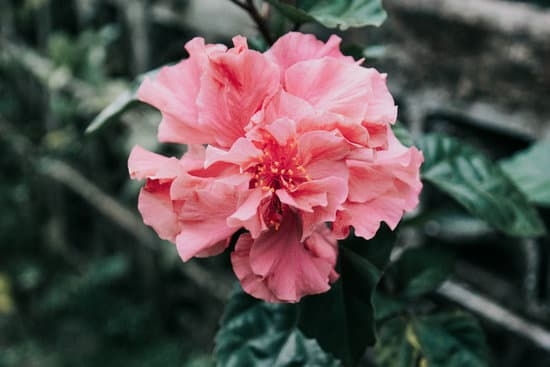Connecting the Dots
Having the right soil base for your garden is critical to its success. To do this you will need to put in four key ingredients: Organic Matter, Compost, Mulch and Fertilizer.
Organic matter helps add important nutrients, increases water retention and encourages microorganisms in the soil. It also provides a suitable environment for fungi, which helps keep all of the small organisms balanced in the soil. The most common form of organic matter is compost, which can come from from leaves or scraps from your kitchen.
Compost helps add additional essentials nutrients such as nitrogen that promote healthy root growth and top growth, while mulch provides insulation against temperature fluctuations and retains moisture. This can be organic such as shredded leaves or processed wood chips.
Fertilizer should also be incorporated into your garden soil to give it an extra boost of nutrients that plants need to grow – these can be added throughout the garden season as needed. Once these four elements are incorporated together they will create an ideal environment for plants to thrive and become resilient against pest infestations and drought.
Examples of soil-improving organisms
Fungi: Fungi are beneficial organisms that act as decomposers, breaking down organic matter and distributing essential nutrients throughout the soil. They also form an interconnected web of filaments called a mycelium, which helps keep soil particles together and add structure to the soil. Examples of fungi include mushrooms and truffles.
Bacteria: Bacteria play a crucial role in the soil system by helping break down complex organic molecules into simpler forms plants can use for nutrition. They also produce microbial acids, which help make certain minerals more available for plant uptake. Examples of bacteria include actinomycetes, Rhodococcus, and Pseudomonas.
Nematodes: Nematodes are tiny worms found in soil ecosystems, either free-living or parasitic. Free living nematodes assist in mutualistic relationship with plant hosts by providing them with nitrogen, assisting with nutrient uptake and infiltration of water through root systems, regulating populations of other microorganisms, and producing antibiotics. They also contribute to improving soil structure by aerating it and releasing enzymes that break down organic matter, releasing important nutrients in the process. Examples of beneficial nematodes include Xiphinema americanum and Belonolaimus longicaudatus.
Strategies for cost-effective gardening
Reusing Soil and Compost: Many gardeners are turning to soil and compost they have collected or stored themselves to get the most out of their gardening.Before going to the expense of purchasing new soil, see what assets you already have on hand. Shoveling up your grass clippings or gathering dead leaves can be an easy way to start a compost bin, producing your own nutrient-rich fertilizer. Additionally, storing and reusing soil from past growing seasons is another economical option for building up your current garden.
Amending Your Soil: When you lack the time to make your own compost, adding amendments such as manure, fertilizer or other substances like limestone will all bring valuable nutrients back into depleted soils. Potting soil can also be used in certain areas and mixed with existing dirt if needed. Building in some mulch will further enrich soils. Though treatments need to be done sparingly and strategically, supplementing soils with natural additives like these will help bulk up nutrition levels as well as improve structure – keeping water retention optimised for longer periods of time.
Economical alternatives to expensive fertilizers
While expensive fertilizers and soil amendments can be effective for feeding your plants, there are some more economical options that might be suitable for a home garden. For instance, compost is an excellent source of nutrients and organic matter, adding valuable bacteria and minerals to the soil. You can make your own compost using kitchen scraps or yard waste. Manure from animals or poultry is another great source of plant nutrition that you can use in the garden without spending much money. As a bonus, manure–either fresh or aged–acts as a soil conditioner, loosening clay soils and improving drainage and aeration in sandy soils. If your soil is deficient in phosphorous, you may want to consider adding bone meal or fish meal (which don’t require animal-based ingredients). Both will break down slowly over time, releasing their nutrients gradually into the soil and helping boost plant vigor. Finally, seaweed extract can be made at home by soaking dried seaweed in clean water; this brew is rich in magnesium and calcium as well as micro-nutrients like iron, zinc and boron. Just make sure to dilute it before applying to avoid burning the roots of your plants!
Benefits of Mulching
Mulching is one of the most beneficial practices when it comes to gardening and soil care. Mulch is an essential component for improving and maintaining soil structure, as well as conserving moisture in the soil.
When organic or inorganic material is added to the surface of garden beds or lawns, it helps to break up compaction and add extra nutrients, such as nitrogen and phosphorus. Organic mulches like wood chips, grass clippings, leaf litter, sawdust and compost all help to improve drainage and improve air circulation in the soil, promoting plant health by providing essential minerals and encouraging microbial life that aids plants in their growth cycle.
In addition to adding vital nutrients to the soil, mulching adds a layer of insulation on top of the root zone also helping plants retain moisture during hot weather conditions. This means that plants don’t need to be watered as often while still providing them with enough moisture during extended dry periods. This can lead to healthier plant growth which results in higher yields of fruit or vegetables. By combining mulching with other fertilization techniques such as composting can further improve overall fertility of your garden’s soil.
Mulching is an easy way for both beginner and experienced gardeners alike can improve overall soil structure without having too much time or expertise put into caring for their garden’s or lawns.
Soil Amendments
Soil amendments provide a number of benefits to gardens. They increase the soil’s water-holding capacity, allowing it to store more moisture. Soil amendments also make the soil more porous so roots can more easily access oxygen and nutrients in the soil. Organic matter held together by mycorrhizal fungi help bind the soil together providing needed stability and air-filled porosity to increase drainage and reduce compaction. Compost is an excellent source of organic matter that helps the garden in a number of ways, most notably providing humus for improved fertility in sandy soils lacking enough organic matter and providing improved structure for clay soils with its ability to loosen it up and allow good drainage. Manure from cows, horses, sheep, or chickens (if properly aged) provides needed nitrogen as well as other trace minerals. Peat moss is great for improving the water-holding capacity of sandy soils; however, it tends to have a low nutrient content so adding other amendments like compost that have higher levels of nitrogen is necessary whenever possible. Lime can be used both to raise pH levels (elevating acidity) as well as providing magnesium and calcium to gardens. Adding rock dusts such as glacial sand or ground basalt helps improve structure while contributing to plant health due to high levels of trace minerals present in them.
Common Gardening Errors
Many gardeners make the mistake of not understanding the importance of soil health when it comes to growing plants and vegetables. All too often, they resort to using chemical fertilizers which can cause damage to the environment in addition to providing little benefit to their plants. The best way to improve your soil is by using organic matter, compost or store-bought soil amendments like bone meal, composted manure, rock phosphate, lime and gypsum. Mulching is also a great way to improve soil structure as it helps retain moisture and suppress weed growth. Adding lots of organic material to your soil provides beneficial bacteria for plants as well as improves aeration, drainage and water retention. Doing regular soil testing will help you identify nutrient deficiencies that need to be addressed with certain amendments or fertlizers. Finally you should pay attention to pH levels; soils which are too acidic or alkaline can reduce plant growth significantly.
Prevention of Soil Erosion
Soil erosion is a major concern for gardeners especially in areas that lack vegetation or are prone to heavy rains. The use of terrace gardening, windbreaks and no-till farming can all be effective in reducing soil loss from running away.
Terrace gardening involves creating horizontal ridges, channels, walls and steep bands on the land surface for water, enabling it to stay on the field rather than running off. This method also increases the soil’s absorbent capacity, therefore reducing the intrusion of pollutants such as sediment. To create successful terracing it is vital to consider protection from wind erosion in addition to preventing water runoff.
Windbreaks or shelterbelts are another beneficial tool in degrading wind force and reinforcing protective vegetation barriers between surfaces of land and air exposure. They not only reduce erosion by acting as a physical barrier but they also increase agricultural production due to higher humidity levels and block nutrient depletion resulting from wind. Windbreaks should be created around fields where long-term soil retention is desired by keeping them in place until there are established woody plants present with a vigorous yearly growth rate and adequate plant numbers for a complete cover density of 70-90%.
No-till farming techniques denote to an approach that refrains from disturbing the natural topsoil layer when cultivating crops, hence preserving soil moisture and slowing down water run-off and its effect on erosive forces such as rainfall or winds. As less tillage equipment must be used for this type of conservation agriculture it thus decreases fuel consumption and emissions which leads to lower cultivation costs allowing farmers greater financial incentives too pick this method over conventional ones.

Welcome to my gardening blog! I am passionate about plants and enjoy sharing my knowledge and experiences with others. In this blog, I will write about everything related to gardening, from tips on how to get started to updates on my own garden projects.





